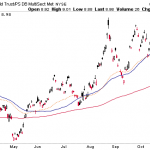In an economy in which wages for 95% of households are stagnant for structural reasons, pushing inflation higher is destabilizing.
The official policy goal of the Federal Reserve and other central banks is to generate 3% inflation annually. Put another way: the central banks want to lower the purchasing power of their currencies by 33% every decade.
In other words, those with fixed incomes that don’t keep pace with inflation will have lost a third of their income after a decade of central bank-engineered inflation.
There is a core structural problem with engineering 3% annual inflation. Those whose income doesn’t keep pace are gradually impoverished, while those who can notch gains above 3% gradually garner the lion’s share of the national income and wealth.
As I showed in Why We’re Doomed: Stagnant Wages, wages for the bottom 95% have not kept pace with official inflation (never mind real-world inflation rates for those exposed to real price increases in big-ticket items such as college tuition and healthcare insurance).
Most households are losing ground as their inflation-adjusted (i.e. real) incomes stagnate or decline.
As I’ve discussed in numerous posts, the stagnation of wages is structural, the result of multiple mutually reinforcing dynamics. These include (but are not limited to) globalized wage arbitrage (everyone in tradable sectors is competing with workers around the world); an abundance/ oversupply of labor globally; the digital industrial revolution’s tendency to concentrate rewards in the top tier of workers; the soaring costs of labor overhead (healthcare insurance, etc.) that diverts cash that could have gone to wage increases to cartels, and the dominance of credit-capital over labor.
In an economy in which wages for 95% of households are stagnant for structural reasons, pushing inflation higher is destabilizing. The only possible output of pushing inflation higher while wages for the vast majority are stagnating is increasing wealth-income inequality–precisely what’s happened over the past decade of Federal Reserve policy.














Leave A Comment